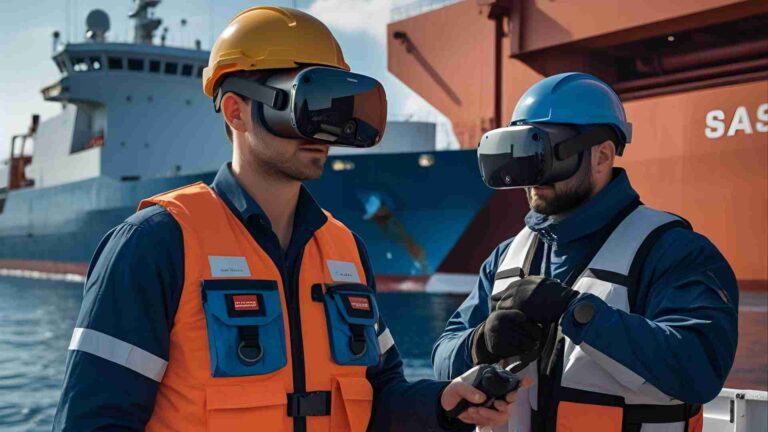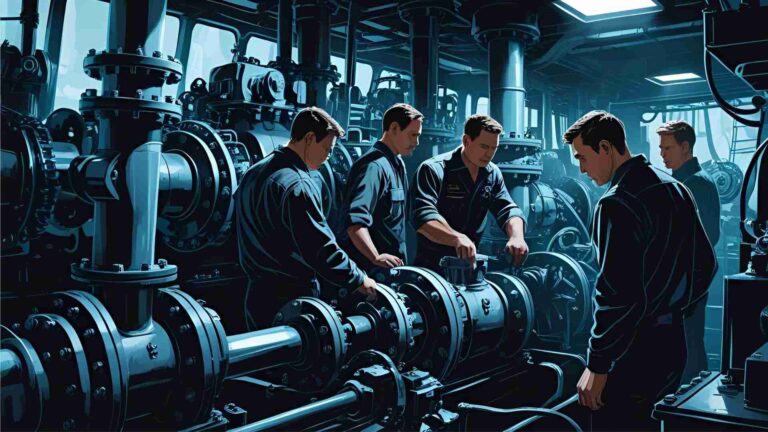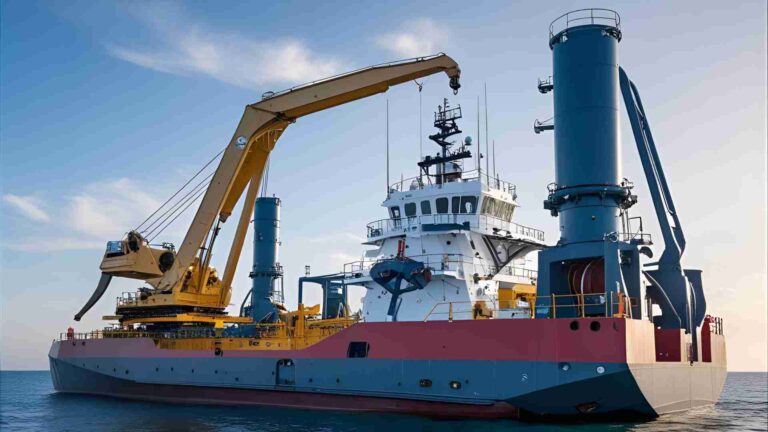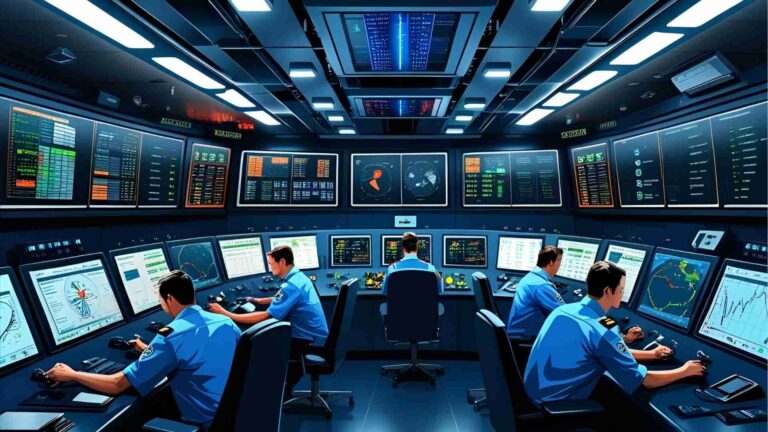Marine Refrigeration System On Ships
Marine refrigeration systems are a critical component of modern ships, ensuring that perishable cargo, such as food, chemicals, and liquefied gases, remains at the required temperature throughout a voyage. On merchant vessels, these systems are not just auxiliary equipment—they are essential for maintaining the quality and safety of cargo and provisions for the crew. For reefer ships, in particular, where the primary function is the transportation of refrigerated cargo, the refrigeration system ensures that sensitive materials arrive at their destination in perfect condition.
The purpose of refrigeration on ships is straightforward: to prevent spoilage, microbial growth, fermentation, oxidation, and moisture loss. Refrigeration achieves this by controlling the environment in which perishable goods are stored. In addition to cargo holds, smaller refrigeration units are used to maintain temperature in crew provision rooms, ensuring the food and drinks remain fresh.
Principles of Marine Refrigeration
The operation of shipboard refrigeration systems relies primarily on the vapor compression cycle (VCRS), although older ships sometimes use the vapor absorption cycle. In both systems, the objective is to remove heat from a controlled space and discharge it into another medium, typically air or seawater.
Vapor Compression Cycle
The vapor compression cycle is the most widely used system on modern ships due to its efficiency and ability to handle large refrigeration loads. The cycle consists of four essential stages:
- Compression: Low-pressure refrigerant vapor from the evaporator is compressed by the compressor. This raises both its pressure and temperature, transforming it into a high-pressure, high-temperature gas.
- Condensation: The high-pressure gas enters the condenser, which is usually a shell-and-tube heat exchanger. The refrigerant releases heat to the cooling medium, often seawater, and condenses into a high-pressure liquid.
- Expansion: The high-pressure liquid refrigerant passes through the expansion valve. This throttling process reduces the pressure and temperature of the refrigerant, partially vaporizing it.
- Evaporation: The low-pressure liquid-vapor mixture flows into the evaporator, absorbing heat from the refrigerated space. This causes the refrigerant to vaporize completely, cooling the space before returning to the compressor to begin the cycle anew.
The cycle operates continuously, maintaining precise temperature control in cargo holds, provision rooms, and other refrigerated areas.
Vapor Absorption Cycle
While largely replaced by the vapor compression cycle, the vapor absorption system is still used in locations where electricity is limited but heat energy is available. This system uses an absorbent-refrigerant pair, often water-ammonia. Here, heat from an external source drives the refrigeration cycle instead of mechanical energy. While less efficient than the compression system, absorption refrigeration is reliable for certain niche marine applications.
Key Components of a Marine Refrigeration System
Marine refrigeration plants comprise several interdependent components, each designed to handle the unique challenges of a shipboard environment, including motion, vibration, and changing ambient conditions.
Compressor
The compressor serves as the heart of the refrigeration system. On ships, reciprocating compressors—either single or two-stage—are most common, although large vessels may use centrifugal compressors for high-capacity applications. The compressor draws low-pressure refrigerant vapor from the evaporator and compresses it, increasing its temperature and pressure before sending it to the condenser.
Modern compressors are equipped with safety cut-outs, including low-pressure (LP) and high-pressure (HP) cut-outs. If suction pressure falls below a set limit, the LP cut-out stops the compressor. Conversely, if discharge pressure rises excessively, the HP cut-out trips to prevent damage.
Condenser
The condenser is a heat exchanger designed to cool and condense the high-pressure refrigerant from the compressor. Shipboard condensers are usually water-cooled, utilizing seawater to absorb heat. The shell-and-tube design is standard, with refrigerant flowing over the tubes while seawater flows inside, or vice versa.
In addition to condensing the refrigerant, modern condensers often serve as receivers, temporarily storing liquid refrigerant during maintenance or system shutdowns.
Receiver
The receiver acts as a reservoir for liquid refrigerant. It ensures that a steady supply of refrigerant is available to the system, particularly during periods of fluctuating load. The receiver also allows for maintenance activities, including draining refrigerant safely from the system.
Filter-Drier
The filter-drier is a crucial component that removes moisture and particulate matter from the refrigerant. Moisture in the system can freeze in the expansion valve, restricting flow and causing operational failures. The filter-drier typically contains silica gel or other desiccants encased in a cartridge.
Solenoid Valves
Solenoid valves control the flow of refrigerant to different sections of the system. A master solenoid valve regulates the main refrigerant line, while individual valves manage each cargo hold or provision room. These valves are often connected to thermostats to ensure automatic operation, opening and closing at preset temperatures.
Expansion Valve
The expansion valve reduces the pressure of the refrigerant, causing it to cool before entering the evaporator. In complex systems, thermostatic expansion valves (TEVs) are used, which adjust the flow of refrigerant based on temperature sensed at the evaporator outlet.
The TEV contains a diaphragm, pin, orifice, poppet valve, and spring. When the superheat of the refrigerant is higher than desired, the TEV opens to allow more refrigerant into the evaporator. Conversely, when the superheat is low, the valve restricts flow, maintaining precise temperature control.
Evaporator
The evaporator acts as a heat exchanger inside the refrigerated space. Low-pressure refrigerant absorbs heat from the air or brine in the system, vaporizing in the process. Direct systems circulate air over evaporator coils using fans, while indirect systems use a secondary coolant, such as brine, to transfer cooling to the storage spaces.
Control Unit
The control unit coordinates the operation of the refrigeration system, integrating safety devices and operational circuits. Safety features may include pressure relief valves, high and low-pressure cut-outs, and bursting discs to prevent overpressure incidents. The control unit also manages solenoids, TEVs, and compressor operation for reliable performance.
How Marine Refrigeration Systems Work
The operation of a marine refrigeration system is continuous and involves several interrelated processes. Air inside a refrigerated hold is drawn into the evaporator, where it transfers heat to the refrigerant. The refrigerant absorbs this heat and evaporates into a low-pressure vapor. The compressor then draws in this vapor, compressing it into a high-pressure, high-temperature gas.
The compressed gas flows to the condenser, where it releases heat to seawater or air and condenses into liquid form. The refrigerant passes through a drier to remove moisture, then through the expansion valve, where its pressure drops, lowering its temperature. The cold refrigerant enters the evaporator to absorb heat from the space again, completing the cycle.
This process maintains a stable temperature in cargo holds and provision rooms, preserving perishable goods effectively.
Refrigeration System Charging, Recovery, and Recycling
Proper maintenance of marine refrigeration systems includes careful charging, recovery, and recycling of refrigerants.
Charging
Charging a refrigeration system involves connecting a refrigerant cylinder via a manifold gauge set and gradually introducing refrigerant. Technicians must ensure safety measures, including wearing PPE, proper ventilation, and leak checks. Charging can be done by weight, in vapor or liquid form, depending on the system design.
Refrigerant Recovery
Refrigerant recovery is essential during maintenance or system decommissioning. Active recovery uses specialized recovery units to pump refrigerant into storage cylinders. Passive recovery uses pressure differences to transfer refrigerant but is slower and may leave residual refrigerant in the system.
Refrigerant Recycling
Recycling involves cleaning recovered refrigerant to remove impurities like moisture, oil, and dirt. This is achieved through oil separation, filtering, dehydration, and, if necessary, distillation to restore purity to acceptable levels.
Environmental Considerations
Modern marine refrigeration systems increasingly use environmentally friendly refrigerants. Traditional R22 refrigerants are being phased out due to ozone depletion potential (ODP) and high global warming potential (GWP). Natural refrigerants like propane (R290) are now preferred for their low ODP and GWP, although their flammability requires additional safety measures, such as sealed casings and ATEX-rated ventilation.
Applications of Marine Refrigeration
Marine refrigeration systems are versatile and critical for various applications:
- Cargo refrigeration: Reefer ships carry perishable food, meat, vegetables, chemicals, and liquefied gases.
- Crew provisions: Food, beverages, and medical supplies are preserved in provision rooms.
- Fishing vessels: Chilling or freezing fish immediately after the catch prevents spoilage.
- Air conditioning: Some refrigeration plants also support HVAC systems for passenger or crew comfort.
- Firefighting systems: Bulk CO₂ and other fire suppression agents may be cooled using marine refrigeration.
Challenges in Marine Refrigeration
Operating refrigeration systems on ships presents unique challenges compared to land-based systems:
- Motion and vibration: Ships experience rolling, pitching, and vibrations that affect equipment operation.
- Temperature and humidity variations: Ambient conditions at sea vary, impacting condenser and evaporator efficiency.
- Seawater corrosion: Water-cooled condensers are exposed to saline water, requiring corrosion-resistant materials.
- Energy efficiency: Systems may rely on electricity, engine waste heat, or dedicated units. Optimal design reduces fuel and power consumption.
Typical Specifications of a Marine Refrigeration Compressor
Table 1: Typical Specifications of a Marine Refrigeration Compressor
| Parameter | Value |
|---|---|
| Type | Reciprocating / Centrifugal |
| Stages | Single / Two-stage |
| Refrigerants | R22, R134a, R404a, R290 |
| Capacity | 50 – 500 kW |
| Pressure range | 5 – 25 bar |
| Cooling medium | Seawater / Air |
Diagram: Simplified Vapor Compression Cycle

Frequently Asked Questions
Marine refrigeration systems are designed to preserve perishable cargo, crew provisions, and sensitive materials by maintaining controlled temperatures on board ships. They prevent spoilage, microbial growth, fermentation, oxidation, and moisture loss, ensuring that cargo arrives safely and in optimal condition.
These systems typically use a vapor compression cycle, where a refrigerant circulates through a compressor, condenser, expansion valve, and evaporator. The refrigerant absorbs heat from refrigerated spaces and releases it to seawater or air, continuously maintaining the desired temperature.
The key components include:
Compressor: Raises refrigerant pressure and temperature.
Condenser: Converts refrigerant vapor into liquid by rejecting heat.
Expansion Valve: Reduces refrigerant pressure and temperature.
Evaporator: Absorbs heat from refrigerated spaces.
Control Unit and Solenoid Valves: Manage system operation and safety.
Maintenance involves regular inspections, cleaning heat exchangers, checking refrigerant levels, leak detection, and ensuring valves and sensors operate correctly. Proper maintenance prevents system failures, ensures consistent cooling, and prolongs equipment lifespan.
Common refrigerants include R22, R134a, R404a, and natural refrigerants like propane (R290). Modern systems prioritize eco-friendly refrigerants with low ozone depletion potential (ODP) and global warming potential (GWP), while ensuring safe handling and efficiency.
Conclusion
Marine refrigeration systems are indispensable for modern shipping. From small fishing vessels to large reefer ships, these systems ensure the safe transport of perishable cargo and provisions. By combining compressors, condensers, expansion valves, evaporators, and advanced control systems, marine refrigeration maintains precise temperatures even in the harsh marine environment.
The shift toward eco-friendly refrigerants and energy-efficient designs demonstrates the evolution of marine refrigeration technology, balancing operational efficiency with environmental responsibility. Whether for cargo, crew provisions, or auxiliary applications, the marine refrigeration system remains a cornerstone of safe and reliable maritime operations.
Happy Boating!
Share Marine Refrigeration System On Ships with your friends and leave a comment below with your thoughts.
Read Ship Buoyancy: The Science that Keeps Vessels Afloat until we meet in the next article.






